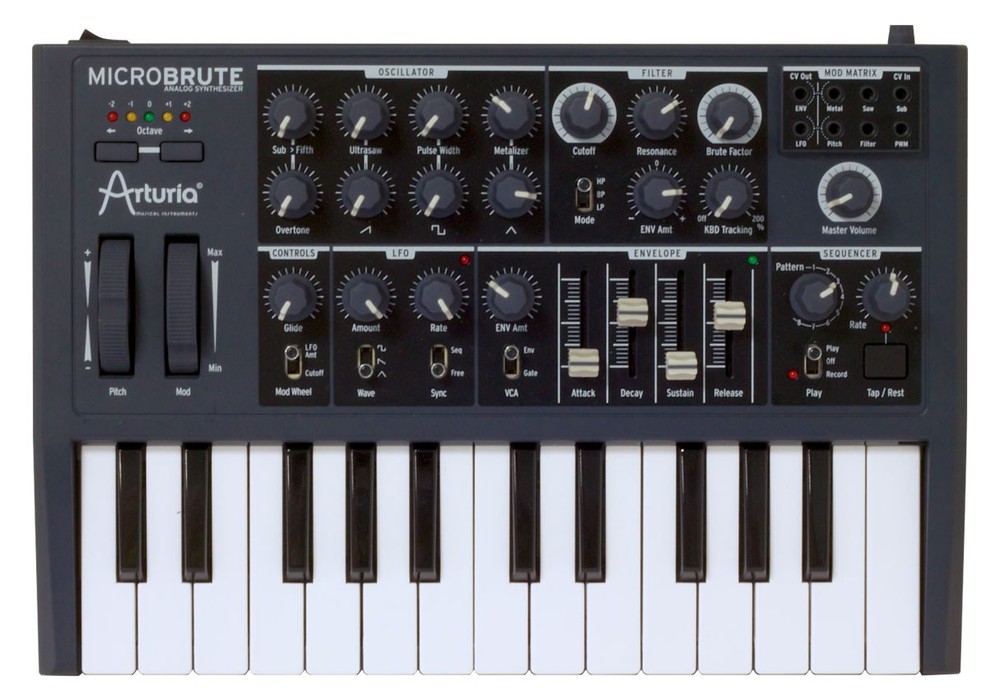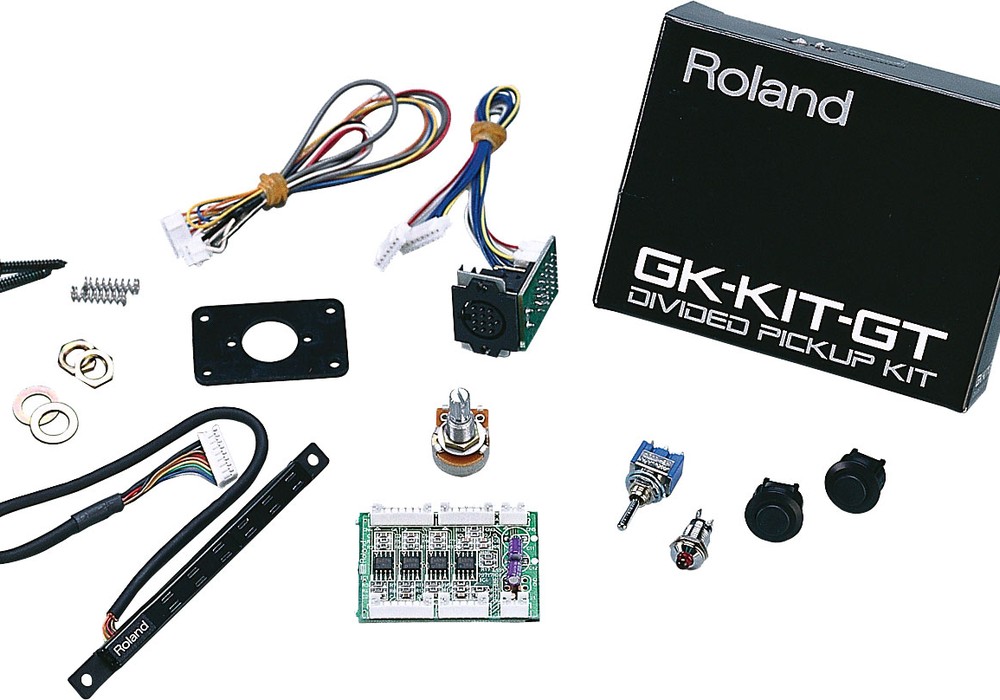Love it or hate it, the Pod by Line 6 is here to stay. And now it's got a companion, the Variax modeling guitar. Just as the Pod was intended to replace a warehouse full of amps and effects, the Variax makes a bid at replacing a closetful of guitars. The way it works is pretty cool. There are no magnetic pickups. The Strat-style adjustable bridge has piezo saddles that sense the vibration of each string. A note is played, and the piezo signal is fed into sound modeling circuitry, then spit out through the output jack and into your amp (or, ahem, Pod.) Because the modeling circuitry basically messes with the actual vibration of the string, there's none of the weirdness associated with guitar synths or MIDI-controllers. There's no tracking delay, and you can play just as you normally would. (Bending, hammer-ons, pull-offs, harmonics, even feedback all work fine.)
The Variax is sensibly laid out like a typical electric guitar, with a five-way "pickup selector" switch, a master volume knob, and a tone knob. There is an extra knob which scrolls through about a dozen banks of "virtual" guitar types, such as Strats, Teles, Les Pauls, Gretschs, hollow jazz-styles, Rickenbackers, plus a variety of acoustic sounds. The idea is that you can pick a type of guitar on this knob, then you get five variations on that sound with the "pickup selector" switch.
I popped six AA batteries in the back compartment, plugged the Variax straight into a Fender Vibroverb reissue, and started playing. It felt pretty good, if a little generic-like a newer Japanese-made Strat. It was fun to have so many different sounds just a switch away. Most of the sounds were serviceable, but seemed to have a little bit of the dreaded "plugged-in Ovation" sound mixed in. It was as if, for example, I was playing an 80% Telecaster, 20% Ovation hybrid. Still, the fact that it worked as well as it did was impressive-this type of technology is still in its infancy. In fact, Line 6 admits this and has included a special port on the bottom of the guitar to accommodate software upgrades in the future.
To further assess the Variax, I invited a variety of respected guitarists over to check it out. The opinions were mixed. One guy who plays in a loose, jangly, Neil Young style couldn't get past the plastic-like Ovation element in the sound. He also hated the shape of the headstock, thinking it was awkwardly sized and shaped. But another player who normally plays with a sharp, angular XTC-type style raved about the Variax. He dug the playability of the neck and general bite to the tone. Another player dismissed the Variax as a toy at first, but later conceded that it was capable of some usable sounds. When we compared the Variax to the "real" guitars that it emulates, again the results were mixed. We compared the Variax's '59 Les Paul sound to an early '70s Les Paul (the, um, closest thing to a '59 we had access to) and the similarities were astonishing. Very close indeed, especially on the "neck pickup" setting. But the Telecaster sounds seemed exaggerated and scooped out, whereas the real Telecaster yielded its trademark brassy midrange. The Variax's Rickenbacker 12-string sound was surprisingly good; it was disorienting to fret and pluck a single string and have the sound of two strings come out of the amp. And I appreciated the attention to detail: the first two strings were doubled in unison while the other four were octaves, just like a real 12-string. Also, the low octave "string" would sound first, as it would on the downstroke of real Rickenbacker 12-string.
I'm not sure who Line 6 is targeting with the Variax. If it's the professional studio market, I don't think the sounds are quite there yet. Hopefully, future software updates will remedy that. On the other hand, the Variax might be a nice tool to have around a studio in order to quickly audition tones before recording a "real" guitar track. And for the studio that can't afford a quiver of "house" guitars, the Variax could come in real handy when overdubbing additional guitar tracks. Also, the Variax strikes me as perfect for a guitarist in a cover band or in an original band that employs a wide variety of guitar types. The sounds are definitely good enough for all but the most discerning live situations. No need to bring a number of guitars to gigs; even acoustic sounds are covered with the flick of a switch. ($1000 street; www.line6.com)






_disp_horizontal_bw.jpg)